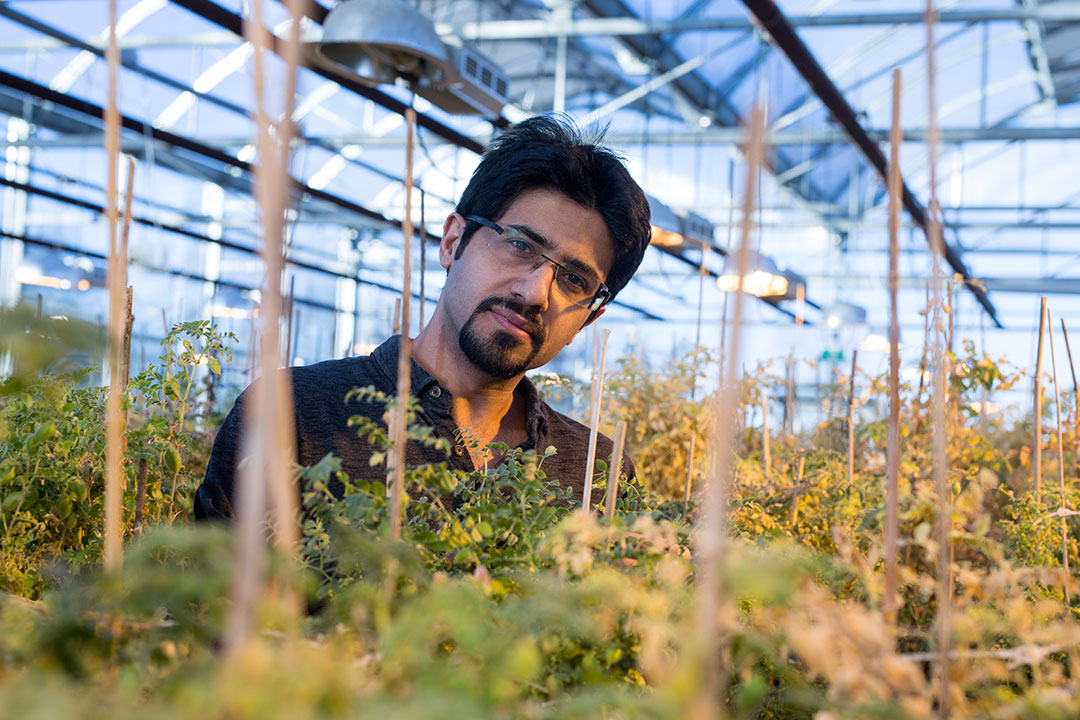
Student studies vitamin A-boosted chickpeas
In developing countries, more than three million children are at high risk for permanent blindness due to severe vitamin A deficiency.
By Federica GiannelliBut University of Saskatchewan researchers think that the power of a little seed could make a difference.
“Chickpeas are a well-known source of protein and minerals,” said Bunyamin Tar’an, plant sciences professor and chickpea breeder at the U of S Crop Development Centre. “Now due to our latest research, we can add to the list that chickpeas are also a good natural source of vitamin A.”
His PhD student Mohammad Rezaei, an Iranian student attracted by U of S agricultural research excellence, has been studying how to increase the natural content of vitamin A in chickpeas. This would help Tar’an develop new varieties to combat dietary deficiencies.
“Developing new chickpea varieties will help keep Saskatchewan—and Canada—among the world’s top producers of pulses,” said Tar’an.
In a 2016 published study, Rezaei identified the genes in chickpea DNA that control the plant’s production of vitamin A. He used the chickpea whole genome sequence generated from the collaboration of Tar’an’s lab with many national and international research institutes and universities.
Rezaei said new chickpea varieties could boost Canadian exports to the Middle East and India, where chickpeas are the most common alternative to meat.
And with vegetarian lifestyles increasingly taking over Western countries, “vitamin A-boosted” chickpeas would also greatly benefit the health of Canadians. Research shows vitamin A enhances brain function, improves sight and skin health, and it may naturally slow down aging.
Rezaei has also found that green seed chickpea is the variety with the highest concentration of vitamin A currently available on the market. This concentration is even higher than the first developed variety of Golden Rice, a genetically modified organism (GMO) grown in areas where people struggle with vitamin A deficiency.
Rezaei’s next goal is to find the genetic markers ‒ key regions of the chickpea genome — associated with the vitamin A trait which ‘paints’ veggies yellow, orange and red.
He has been dissecting thousands of chickpea seeds from more than 250 known varieties carrying different concentrations of vitamin A to study how this trait is transmitted to their “children” and isolate the best lines.
Once Rezaei has identified the genetic markers, Tar’an would use them for a marker-assisted selection to speed up the process of developing new varieties. This technique would enable him to cross, pre-select and release only the most promising chickpea lines that carry the genetic markers associated with higher vitamin A production.
Funded by the Saskatchewan Ministry of Agriculture and Saskatchewan Pulse Growers, Tar’an and Rezaei’s study is one of the many cutting-edge plant breeding projects led by the U of S Crop Development Centre (CDC) to improve and develop new crops.
“Since the 70s, the CDC has been under the international spotlight for releasing hundreds of new varieties of pulses including lentil, pea, chickpea, dry bean and faba bean, and for hosting some of the most successful pea and lentil breeding programs worldwide,” Tar’an said.
Federica Giannelli is a graduate student intern in the U of S research profile and impact unit.
This article first ran as part of the 2017 Young Innovators series, an initiative of the U of S Research Profile and Impact office in partnership with the Saskatoon StarPhoenix.

